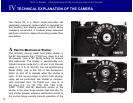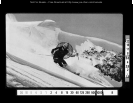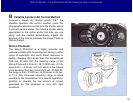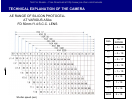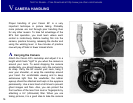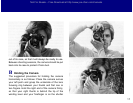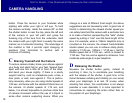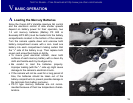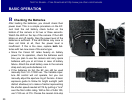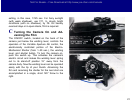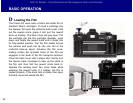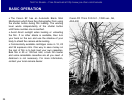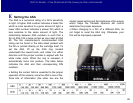
18
button. Press the camera to your forehead while
sighting with either your right or left eye. To hold
the camera vertically, rotate the camera 90° so that
the shutter button is near the top, place the left end
of the camera in your left palm and grasp the
focusing ring of the lens from the underside. Hold
the camera with your right hand in exactly the same
manner as in horizontal shooting. The advantage of
this method is that it permits rapid changing of
positions from horizontal to vertical with a
minimum of fumbling.
C
Bracing Yourself and the Camera
To reduce camera shake, brace your elbows against
your body and stand flat on your feet. Spread them
apart with one foot a little bit in front of the other,
and bend your knees slightly. If there is a sturdy
support near by, such as a telephone pole, a tree, a
door jamb, or wall, lean against it. This is particu-
larly necessary, when you are using shutter speeds of
1/30 sec. and below with the standard 50mm lens on
the camera. At shutter speeds of 1/15 sec. and
below, it is almost impossible to produce shots free
of camera movement without the use of a tripod or
some other camera supporting device. When you
change to a lens of different focal length, the above
suggestions are not necessarily valid. A good rule of
thumb in determining the slowest shutter speed you
can safely hand-hold the camera with a particular lens
is to make a fraction representing this "safe" shutter
speed by putting a "one" over the focal length of the
lens. For example, when a 135mm telephoto lens is
mounted on the camera, the slowest hand-holdable
shutter speed you can use to achieve sharp photo-
graphs is 1/135 sec. (135mm = 1/135 sec.). Set the
shutter speed dial at 1/125 sec., which is closest to
1/135 sec. This rule can be applied to all lenses, from
moderate wide-angle to super-telephoto.
D
Releasing the Shutter
Squeeze the shutter button gently, instead of
punching it. Also, try to coordinate your breathing
with the release of the shutter. A good time is the
instant between exhaling and inhaling (or vice versa)
when your diaphragm is at rest. Of course, when
shooting fast action, this coordination is not always
possible or even desirable. It is more important to
concentrate on capturing the action rather than on
the position of your diaphragm.
Not For Resale – Free Download at http://www.joe-chan.com/manuals
CAMERA HANDLING



